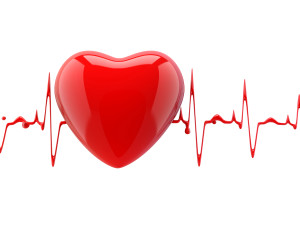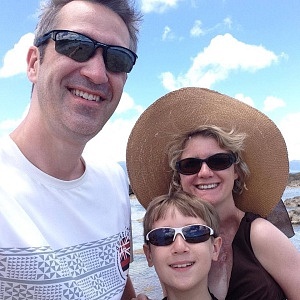Can you imagine waking up completely immobilized, unable to breathe separate from a ventilator, and carrying the heart of someone who had died suddenly, tragically, and far too soon?!
I can because that was me 8 years ago, and I was terrified that I would never recover.

I spent 32 days in the ICU after my heart transplant and 40+ days on a ventilator because I had crossed over, so to speak. I had absolutely no confidence in my body’s ability to do anything it had mastered in the 38 years leading up to this lived experience.
I had been so profoundly sick leading up to the death of my heart that I couldn’t do anything but rest. It didn’t matter what I wanted; my body was incapable. In my mind, if I didn’t jump on the physical rehabilitation train, I didn’t stand at chance at a full recovery.
I lost my intercostal muscles, every muscle for that matter, to atrophy. Use it or lose it as the saying goes. I had no control over my bodily functions. A flip phone felt as though it weighed a couple tons at least, and I had no center of gravity.
I actually forgot what it felt like to sit on my own rear end, and trust me when I tell you I did NOT want to find out as this was WAY outside of my comfort zone. Again, I had no confidence in my body whatsoever.
Because of my background as a nurse practitioner, I knew that I needed to start something until my medical-surgical team decided I was ready for rehabilitation, so I started with my fingers and toes: touching each finger to my thumb as quickly as I could. I also began to imitate typing on my laptop while I wiggled my toes. I had the presence of mind to teach my husband some passive range of motion exercises prior to the transplant, so he helped me prevent foot drop.
I was discharged from the hospital 60 days following my admission to intensive inpatient rehabilitation where I worked with PT, OT, and ST for hours every. single. day. I weighed all of 66 pounds, and you could appreciate every bone within my body.
I took my first steps on 6/20; two steps to be exact as my ability to stand independently without my knees buckling was roughly 30 seconds. Within a week, I was walking using the parallel bars to stabilize myself when necessary; within 2 weeks, I was walking with a walker with my 5-year-old son pushing the wheelchair behind me in case I needed to have a sit or fell backwards.
To the onlooker, this must have been a sight to behold as it wasn’t just me walking; it was me with my walker, my oxygen tank, my wound vacuum, my oxygen saturation monitor, my PT, and my husband and our son. Quite the entourage, huh?! Oh yeah, all this with my eyes shut for focus. My PT asked me how I made it through the grocery store pushing a cart with my eyes shut. Trust me, even a 66 pound weakling can pack a punch!
Slowly, but slowly, my center of gravity returned as they made me bowl despite the fact that I was more likely to fall over than the pins. They would have me sit on the edge of my bed, then push me to rebuild my ability to compensate when thrown off balance. They had me walk on various uneven surfaces, including inclines, declines, gravel, stairs, and batting balloons with our son.
 Finally, there was one day that the cellular memory within my muscles kicked back in, and I have not looked back: not. even. once! I was on about the business of kicking the walker to the curb, wound healing, strength and stamina building, and getting used to the feeling of underwear, bras, jeans, and anything else with bands. It was hard, yet all of this had to be accomplished before I could get about the business of post-transplant cardiac rehabilitation.
Finally, there was one day that the cellular memory within my muscles kicked back in, and I have not looked back: not. even. once! I was on about the business of kicking the walker to the curb, wound healing, strength and stamina building, and getting used to the feeling of underwear, bras, jeans, and anything else with bands. It was hard, yet all of this had to be accomplished before I could get about the business of post-transplant cardiac rehabilitation.
Moral of this Post: “Slow and Steady Wins the Race” –Aesop
About Stephanie Zimmerman, MSN
Wife. Mom. Young Adult Childhood Cancer Survivor. Pediatric Oncology Nurse Practitioner. Heart Transplant Recipient. Advocate. Trailblazer-Undaunted.
For more writing from Stephanie, visit anticancerclub.com/topic/musings-from-stephie/
